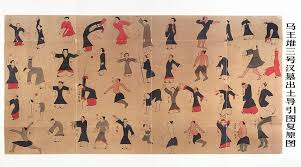 Tai Chi and Qi Gong are ancient exerise regimens that rebuild, strengthen and transform our bodies and essential energy, resulting in healthy longevity. The Harvard Medical School Guide to Tai Chi identifies the following key benefits of a regular practice of Tai Chi or Qi Gong:
Tai Chi and Qi Gong are ancient exerise regimens that rebuild, strengthen and transform our bodies and essential energy, resulting in healthy longevity. The Harvard Medical School Guide to Tai Chi identifies the following key benefits of a regular practice of Tai Chi or Qi Gong:
- Improved Balance and Bones
- Easing of Aches and Pains
- Strengthening of Your Heart
- Sharpening of Your Mind
- Enhanced Psychological Well-Being and Sleep Quality
The Harvard Women’s Health Watch, when discussing the health benefits of Tai Chi has said it might be called “medication in motion.”
Qi Gong (Qigong/Chi Kung depending on translation) practices date back thousands of years, with some of the earliest extant documented examples being found in Mawangdui in Changsha, China. The site dates back to between 206BC and 9AD. These ancient movements originated in shamanic dance practices. Over the centuries, they have been refined into discrete sets of movements with varying functions and applications. The term Qi Gong is an umbrella term that was adopted in the 20th century to group together diverse practices such as Nei Dan (internal alchemy practices,) Xing Qi (Qi circulationpractices,) Zhan Zhuang (standing meditation,) and Dao Yin (guiding and pulling Qi through movement and berath practices.) For more information you might enjoy reading the Qigong wikipedia article.
While Qi Gong practices often involve discrete individual movements that are repeated several times before doing the next movement, Tai Chi forms involve continuous flow from one movement to the next. They may have as many as 108 movements practiced in specific sequences. Tai Chi is considered a more advanced practice, and traditionally the practitioner would have several years of Qi Gong or martial arts training before starting Tai Chi.